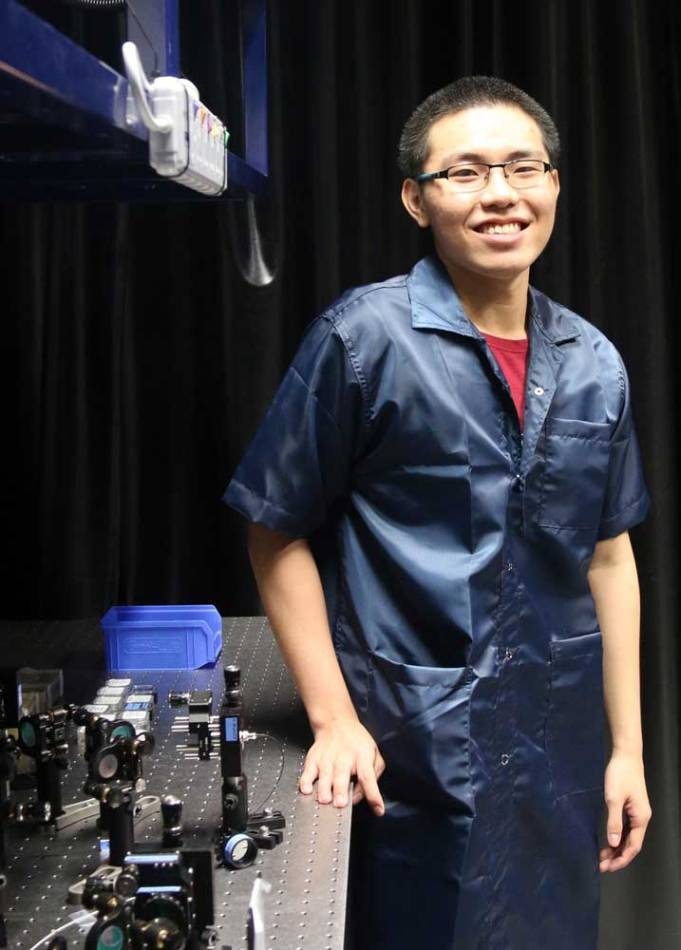Sep 9 2016
A novel technique to measure the separation of two lights sources, no matter how close they are, was first tested by researchers at the Centre for Quantum Technologies. The technique is exciting interest because it could be applied in telescopes and microscopes.
 CQT PhD student Tang Zong Sheng built an experiment to test a new super-resolution imaging technique – making him first author on his first paper, just a few months into his PhD. (Credit: Centre for Quantum Technologies)
CQT PhD student Tang Zong Sheng built an experiment to test a new super-resolution imaging technique – making him first author on his first paper, just a few months into his PhD. (Credit: Centre for Quantum Technologies)
"This is our fastest ever paper from concept to result," says CQT's Alexander Ling, who set PhD student Tang Zong Sheng and Research Fellow Kadir Durak working on the project after learning about the proposal from its inventor, his NUS colleague Mankei Tsang.
Mankei is head of the Quantum Measurement group in the NUS Department of Electrical and Computer Engineering. He'd presented his ideas in a seminar at CQT in November 2015. Alexander's experimental paper, now accepted at Optics Express, was posted to the physics preprint server by May 2016. "The team worked very hard," he says.
Killing Rayleigh's Criterion
Mankei's CQT seminar was titled "Killing Rayleigh's Criterion by Quantum Measurement". A standard concept in optics for over 100 years, Rayleigh's criterion defines the minimum distance between two point light sources that can be resolved. If the points get closer together, the criterion says, you can no longer measure their separation.
With members of his group, Mankei used ideas from quantum optics and statistics to show that there's in fact no theoretical lower bound on the separation you can measure. In a series of papers, the team have shown that the criterion is "irrelevant" and proposed ways to do the more precise measurements.
The group's method hit the news following publication in the journal Physical Review X with a feature in the companion magazine, Physics. That feature notes the relevance to astronomical imaging, particularly to mapping the separation of binary stars.
Quantum ideas drove the discovery, but the experiments themselves can be done with classical optics.
Narrowly First
At CQT, Zong Sheng built the experiment as part of his PhD training in the lab. He'd done his final year project as an NUS undergraduate with another CQT scientist, starting his PhD with Alexander's group only in February. "I think this was kind of lucky. The experiment was surprisingly easy to construct. Our first setup didn't work but we had some ideas for what to change" says Zong Sheng.
The experiment uses a modified version of a Mach–Zehnder interferometer, making a proof-of-principle measurement on light emitted from an optical fibre.
Within a month of the CQT group's paper making it to the preprint server, three other groups had published their own variations of Mankei's new method.
In biology, there's a technique for 'super-resolved fluorescence microscopy' that relies on controlling the light emission from samples. This has led to exciting discoveries – and Nobel prizes for the approach's inventors. It's early days for this new super-resolution method, but it looks promising to astronomers. After all, they don't have the option of controlling light from the stars.